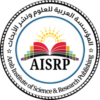الملابس الجاهزة
Analytical study of sustainability in ready-made clothes
Mrs. Manahil Mansour Omar Al-Qurashi*1, Co-Prof. Naglaa Jaber Dhifallah Al-Thabiti1
1 College of Designs and Arts | Umm Al-Qura University | KSA
Abstract: Human beings have been by nature since ancient times exploiters of development to achieve their wealth and resources and the outputs in their various forms to overcome the deficit and poverty and aspire to wealth by their development practices, but neglecting the environmental aspect. The research dealt with the study of the reality of sustainability in the ready-made clothes industry by analysing sustainable practices in luthe production stages of ready-made clothes for several factories in the Kingdom of Saudi Arabia, specifically in Makkah Al-Mukarramah region (Jeddah – Taif).
To understand the concept of sustainability and the practices followed by factories in the field of ready-made clothing and in terms of studying the current situation to reach the methods followed in the different production stages and the extent to which they achieve sustainability, the research also aims to identify the factors affecting the production of clothing products and contributing to increasing waste and environmental pollution, and trying to contribute by putting appropriate proposals to achieve sustainability in factories through exploiting the remnants of fabrics and raw materials.
The research consisted of five chapters.
The most crucial results of the research were that most of the methods used in the stages of production and the extent to which they achieved sustainability in the “environmental dimension” were the stage of examining the cloth by 25.5%,
followed by the second stage is the “aggregation stage” with a rate of 21.6%. The third stage of “knitting” with a rate of 16.9%, followed by the fourth stage of “cutting and straightening” the fabric with a rate of 12.9%, and the fifth place was the “design and pattern preparation” stage with a rate of 10.7%, followed by the sixth stage is the “interlocking” stage with a rate of 7.1%, followed by the seventh stage of “ironing and packaging” with a rate of 5.2%.
The study recommended focusing on inserting sustainable practices in the stages of production of ready-made clothes, as it is the main factor at the present time to ensure profit and competitive position and preserve the environment around us.
Keywords: Ready-Made Clothes, sustainable practices, factory owners.
دراسة تحليلية لواقع الاستدامة في مصانع الملابس الجاهزة
أ. مناهل منصور عمر القرشي*1, الأستاذ المشارك / نجلاء جابر ضيف الله الثبيتي1
1 كلية التصاميم والفنون | جامعة أم القرى | المملكة العربية السعودية
المستخلص: يعتبر الإنسان بطبيعته منذ القدم مستغل للتنمية كي يحقق ثرواته ومواردة والنواتج بتعدد أشكالها ليتجاوز العجز والفقر والتطلع للثراء بممارساته التنموية لكنه مهملا الجانب البيئي واهتمت الدراسة الحالية بتحليل واقع الاستدامة في صناعة الملابس الجاهزة من خلال الممارسات المستدامة في مراحل إنتاج الملابس الجاهزة لعدد من المصانع في المملكة العربية السعودية تحديدًا بمنطقة مكة المكرمة (جدة – الطائف)
للتعرف على مفهوم الاستدامة و الممارسات التي تتبعها المصانع في مجال صناعة الملابس الجاهزة ومن حيث دراسة الوضع الحالي للتوصل إلى الأساليب المتبعة في مراحل الإنتاج المختلفة ومدى تحقيقها للاستدامة ويهدف البحث أيضا للتعرف على العوامل المؤثرة في صناعة المنتجات الملبسيه والتي تساهم في زيادة الفاقد والتلوث البيئي، ومحاولة المساهمة عن طريق وضع مقترحات مناسبة لتحقيق الاستدامة في المصانع من خلال استغلال بقايا الأقمشة والمواد الخام وقـد أشـتمل البحث على خمس فصول.
وكانت أهم نتائج البحث أن أكثر الأساليب المتبعة في مراحل الإنتاج ومدى تحقيق الاستدامة بها في “البعد البيئي” هي مرحلة فحص القماش بنسبة 25.5%، يليها في المرتبة الثانية مرحلة التجميع بنسبة 21.6%،
ويأتي في المرتبة الثالثة مرحلة التشغيل “الحياكة” بنسبة 16.9%، يليه في المرتبة الرابعة مرحلة قص وفرد القماش بنسبة 12.9%، ويأتي في المرتبة الخامسة مرحلة التصميم وإعداد الباترون بنسبة 10.7%، يليه في المرتبة السادسة مرحلة الميتراج “التعشيق” بنسبة 7.1%، يليه في المرتبة السابعة مرحلة الكي والتغليف بنسبة 5.2%. وأوصت الدراسة بالاهتمام في إدخال الممارسات المستدامة في مراحل إنتاج الملابس الجاهزة كونها العامل الأساسي في وقتنا الحاضر لضمان الربح والمكانة التنافسية والحفاظ على البيئة من حولنا.
الكلمات المفتاحية: إنتاج الملابس الجاهزة، الممارسات المستدامة، أصحاب المصانع.
